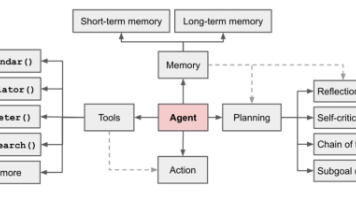n8n智能体开发:Zep 节点
使用 Zep 节点可以将 Zep 作为记忆存储服务器。
使用 Zep 节点可以将 Zep 作为记忆存储服务器。
本页面列出了 Zep 节点支持的操作,并提供了更多资源的链接。
凭据
您可以在此处找到该节点的认证信息这里。
/// 注意 | 子节点中的参数解析 子节点在使用表达式处理多个项目时的行为与其他节点不同。
大多数节点(包括根节点)会接收任意数量的输入项,处理这些项目,然后输出结果。您可以使用表达式来引用输入项,节点会依次为每个项目解析表达式。例如,给定五个 name 值作为输入,表达式 {{ $json.name }} 会依次解析为每个名称。
而在子节点中,表达式总是解析为第一个项目。例如,给定五个 name 值作为输入,表达式 {{ $json.name }} 总是解析为第一个名称。 ///
节点参数#
- 会话 ID: 输入用于在工作流数据中存储记忆的 ID。
模板和示例#
Browse Zep integration templates, or search all templates
相关资源#
更多关于该服务的信息,请参考 LangChain 的 Zep 文档。
查看 n8n 的高级 AI 文档。
单一记忆实例#
If you add more than one Zep node to your workflow, all nodes access the same memory instance by default. Be careful when doing destructive actions that override existing memory contents, such as the override all messages operation in the Chat Memory Manager node. If you want more than one memory instance in your workflow, set different session IDs in different memory nodes.
AI glossary#
- completion: Completions are the responses generated by a model like GPT.
- hallucinations: Hallucination in AI is when an LLM (large language model) mistakenly perceives patterns or objects that don't exist.
- vector database: A vector database stores mathematical representations of information. Use with embeddings and retrievers to create a database that your AI can access when answering questions.
- vector store: A vector store, or vector database, stores mathematical representations of information. Use with embeddings and retrievers to create a database that your AI can access when answering questions.
《DeepSeek高效数据分析:从数据清洗到行业案例》聚焦DeepSeek在数据分析领域的高效应用,是系统讲解其从数据处理到可视化全流程的实用指南。作者结合多年职场实战经验,不仅深入拆解DeepSeek数据分析的核心功能——涵盖数据采集、清洗、预处理、探索分析、建模(回归、聚类、时间序列等)及模型评估,更通过金融量化数据分析、电商平台数据分析等真实行业案例,搭配报告撰写技巧,提供独到见解与落地建议。助力职场人在激烈竞争中凭借先进技能突破瓶颈,实现职业进阶,开启发展新篇。

更多推荐
 已为社区贡献293条内容
已为社区贡献293条内容







所有评论(0)